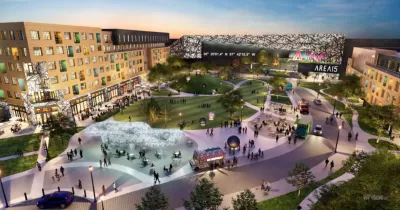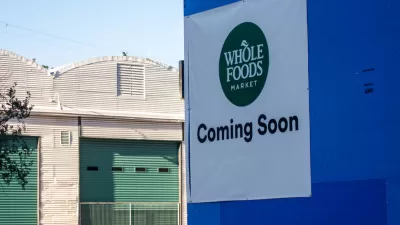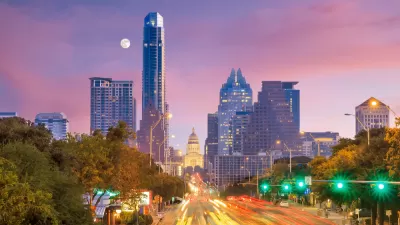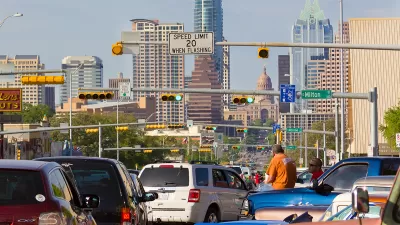A North Austin development will be the first approved under the city's new Right to Stay and Right to Return policies, aimed at preventing displacement in gentrifying neighborhoods.

Emily Nonko reports on a proposed development in North Austin that "will triple the size of a small existing park, add retail and non-profit space, and build hundreds of affordable homes with Austin’s new Right to Stay and Right to Return policies, which allow working-class families currently living in the gentrifying neighborhood to find permanently affordable places to stay, and also allow displaced families with historic ties to the neighborhood to be preferred for affordable units." The Austin City Council passed the policies in 2018 in an effort to help "families affected by gentrification in certain Austin neighborhoods."
The lot in the St. John neighborhood was bought by the city in 2008 with plans to build a police substation and courthouse, but "plans stalled and opposition grew." After years of community activism and outreach, "private developer Greystar will partner with the Housing Authority of the City of Austin to build at least 560 housing units, half of which will be for households earning between 50 and 70 percent of Austin’s median family income." The developer will also enhance an adjacent park, build "at least 15,000 square feet of retail and 'support services space' responsive to community needs," and pay off a $10.8 million bond owed on the property.
Although the actual effectiveness of the policies is yet untested, Councilmember Greg Casar hopes the project "can really serve as a model of how we can develop dozens more acres of city-owned property, where we get the housing stock we need so that people can come back to neighborhoods they’ve been pushed out of."
FULL STORY: Austin Residents Will Have ‘Right to Return’ In New Development for the First Time

Trump Administration Could Effectively End Housing Voucher Program
Federal officials are eyeing major cuts to the Section 8 program that helps millions of low-income households pay rent.

Planetizen Federal Action Tracker
A weekly monitor of how Trump’s orders and actions are impacting planners and planning in America.

The 120 Year Old Tiny Home Villages That Sheltered San Francisco’s Earthquake Refugees
More than a century ago, San Francisco mobilized to house thousands of residents displaced by the 1906 earthquake. Could their strategy offer a model for the present?

Washington State Legislature Passes Parking Reform Bill
A bill that would limit parking requirements for new developments is headed to the governor’s desk.

Missouri Law Would Ban Protections for Housing Voucher Users
A state law seeks to overturn source-of-income discrimination bans passed by several Missouri cities.

Op-Ed: Looking for Efficiency? Fund Intercity Buses
Much less expensive than rail, intercity buses serve millions of Americans every year, but public subsidies are lacking.
Urban Design for Planners 1: Software Tools
This six-course series explores essential urban design concepts using open source software and equips planners with the tools they need to participate fully in the urban design process.
Planning for Universal Design
Learn the tools for implementing Universal Design in planning regulations.
Ada County Highway District
Clanton & Associates, Inc.
Jessamine County Fiscal Court
Institute for Housing and Urban Development Studies (IHS)
City of Grandview
Harvard GSD Executive Education
Toledo-Lucas County Plan Commissions
Salt Lake City
NYU Wagner Graduate School of Public Service





























